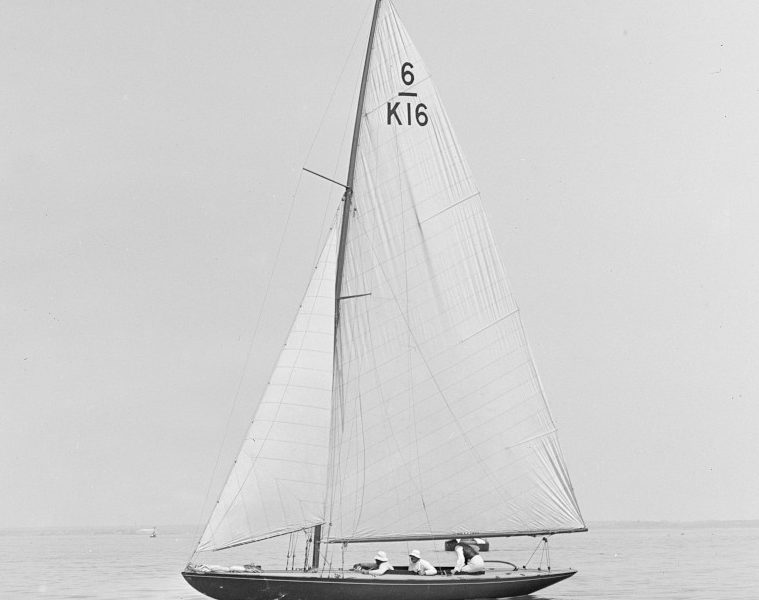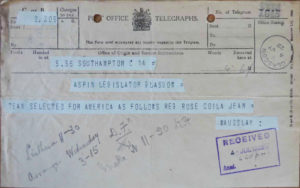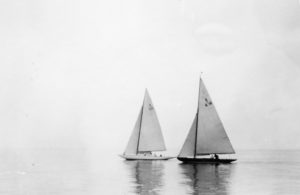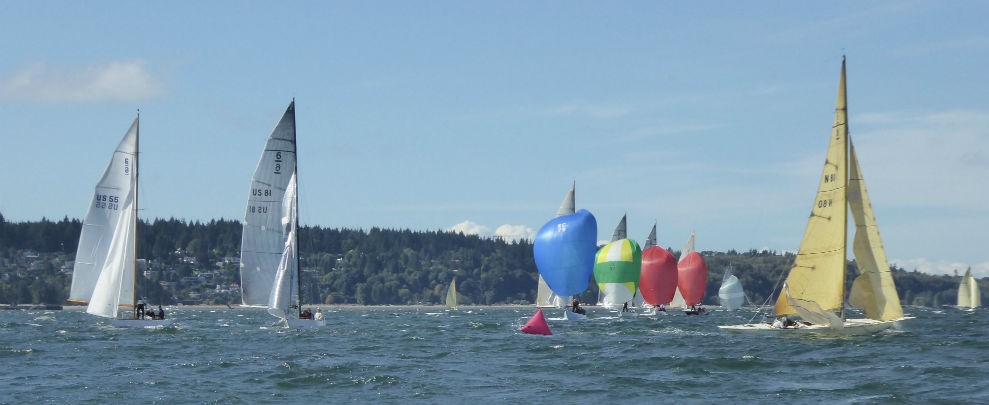The boats that sailed a century ago – part 6: Jean
July 7th, 2021

100 years of racing
2021 is the centenary year of the British American Cup, the first major trophy for international team racing. The competition was hugely popular and was a further boost for the increasingly successful International Six Metre Class.
The eight entrants in 1921 – four each for Britain and America – were launched in the same year. This is part of a series of posts to mark the centenary of the launch of the eight pioneering international team racing boats.
The British team – Jean
Jean was built at the yard of Camper and Nicholsons in 1921 for Major Sir John H. Ward, army officer and equerry to four monarchs from Edward VII to George VI. Ward served in the second Boer War and the First World War where he achieved the rank of Major.
He married New Yorker Jean Templeton Reid, after whom he named his Six Metre. She was daughter to the American ambassador to the United Kingdom – a reflection of the strong ties between the two countries that made the British American Cup possible.
Jean was arguably the most pleasing on the eye of the British Sixes in the competition. However she was not the fastest.
Charles Nicholson designed or co-designed 24 Six Metres starting with Solna in 1910 and ending with Juno in 1948. The British American Cup competition appeared to provide the impetus to design Six Metres again after the First World War. Camper and Nicholsons’ previous Six, Peterkin, was built seven years previously in 1914. There were seven Nicholson designs built in the 1920s including his first and only Six for another builder, Borgila, the first GKSS lottery boat, built by Ängholmens Båtvarf, Sweden. Camper and Nicholsons only built Sixes to their own designs.
Four other Camper and Nicholsons Sixes raced in British American Cup competitions. These were Capelle, Erica, Solenta and Lalage (twice) who won gold at the 1936 Olympics with Christopher Boardman at the helm.
The races
Jean survived the harsh weather of the first race and finished fourth ahead of team mate Victoria and behind Polly, but nearly nine minutes off the lead. She was fourth again in the second race and fifth in the third. In the fourth race, she collided with a French yacht and could not finish. She was sixth in the next race and saved her best till last coming second behind Victoria by 29 seconds and ahead of the American Grebe. She scored a total of 24 points, coming fourth overall.

Telegraph from Algernon Maudslay confirming the entrants to the 1922 British American Cup. Archive reference RNAC.11.5.1.
Jean was the only of the British entrants to race again in the competition when she raced the following year in New York, and once more alongside two Fifes. Her performances were again mixed, and again she totaled 24 points, this time coming sixth overall. She finished fifth, second and first in the first three races, and seventh, last and seventh in the remaining three races.
After the British American Cup
In 1924 Jean was registered in Gosport to a G. H. Goodricke of the Goodricke firm of solicitors, Durban, South Africa. By 1927 Jean, still registered at Gosport, was owned by a Lt Col R. Sloan-Stanley of Alverstoke, Hampshire, also known to have lived at Cowes.

Jean (K16) and Bissbi (S31) racing in 1930. Archive reference PBDM.1.4.
Jean was later owned by A. R. Luke of Luke & Co boat builders in Hamble, Southampton. Although Luke & Co didn’t design or build any Six Metres (they did built 5 and 7 Metres), they did, on occasion, build to designs by Camper & Nicholsons. It may have been therefore, therefore, that they bought Jean to refurbish and sell on. Ownership passed to Col F. H. Cleaver CBE DSO the following year and, finally, Jean was sold to Richard Pershouse in 1934 and registered for the first time out of Gosport at Aldeburgh. Pershouse otherwise owned a series of classic Dragons.
Jean is thought to have been broken up on the river Dreben at Waldringfield in the late 1940s.
Posted in Anniversary by James Harris on July 7th, 2021. Tags: British American Cup, Flya, Sailing, Six Meter, Six Metre, William Fife
Subscribe to comments | Both comments and pings are currently closed.
We need your support
Support our project and submit your records or make a donation to the International Six Metre Archive.
